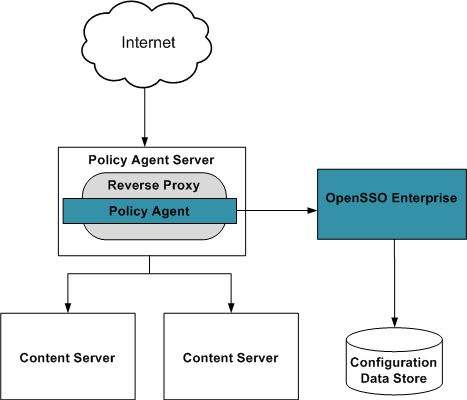Using a Single Policy Agent
When there is a uniformity in the configuration of the content servers in the back end (including access denied URLs, application logout URLs, profile, session and response attributes, and the web container type), a single policy agent for the reverse proxy server would be the efficient way of protecting the content. The following diagram illustrates this.

Regardless of the number of content servers being fronted by the reverse proxy, only one agent is installed on the reverse proxy machine. The footprint of this configuration is less cost (fewer agents to maintain) and less memory (a single agent requires less memory to cache). With one agent no communication will occur between the content servers and the OpenSSO server. The policy agent will have back channel communications with the OpenSSO load balancer to update cache entries, perform session validation, and make policy requests but, since the agent is installed on the reverse proxy server and not on the content servers, only the reverse proxy server would communicate with the OpenSSO load balancer. This effectively reduces the number of communication channels which would result in fewer firewall rules, tighter control over server-to-server communications, and a higher level of security. On the other hand, one agent does not allow identification of content servers which may impact application usage reports. One agent also uses the same session identifier introducing the risk of cookie hijacking.
- © 2010, Oracle Corporation and/or its affiliates
